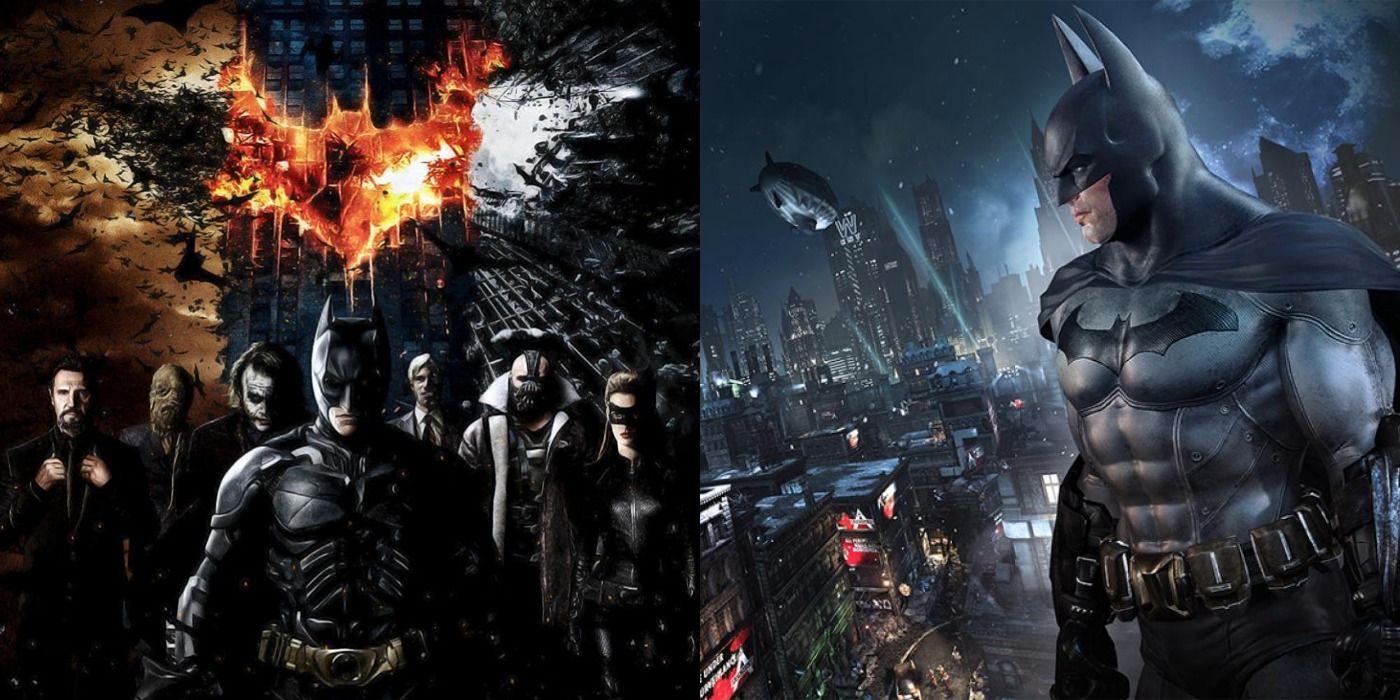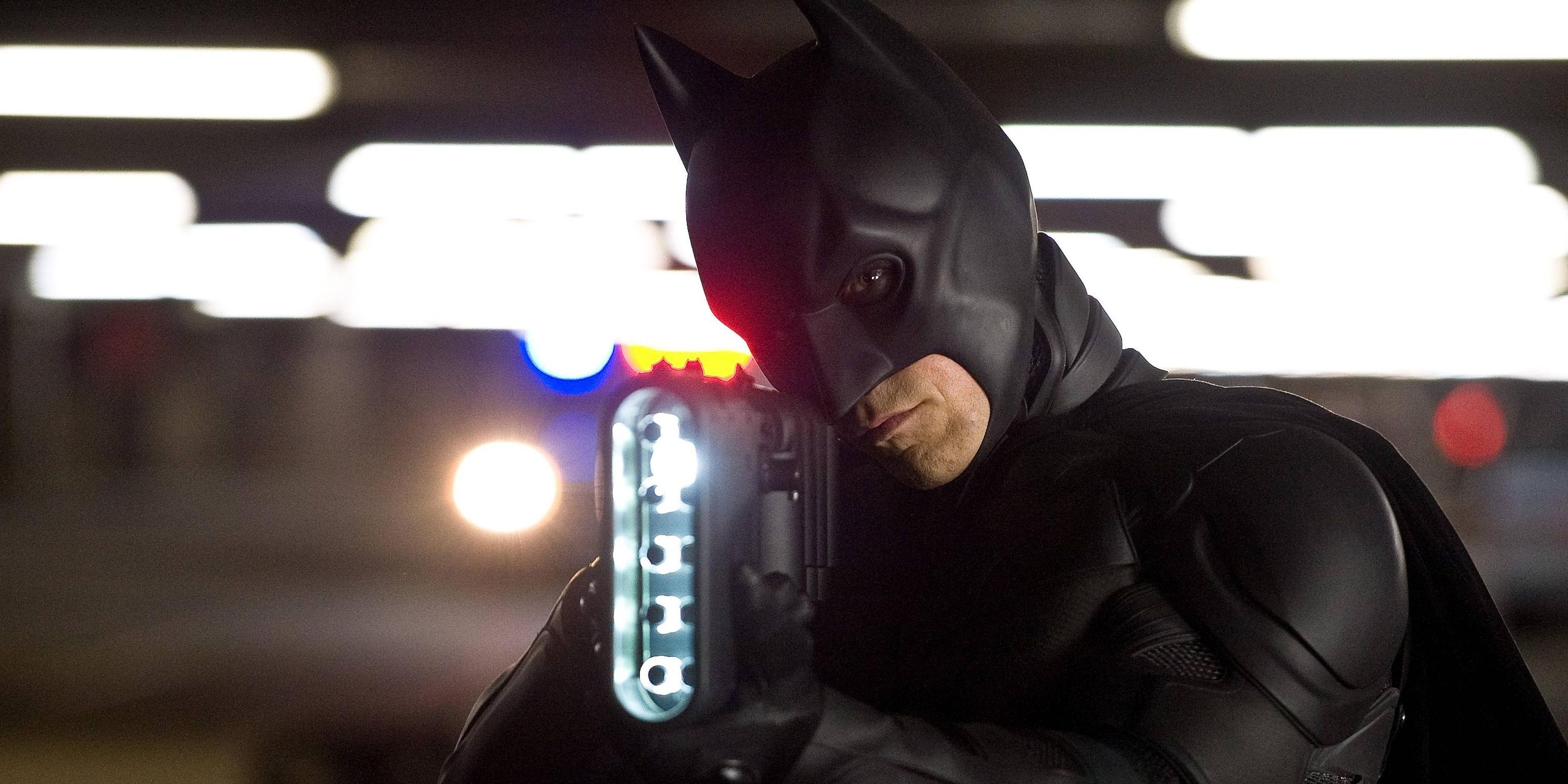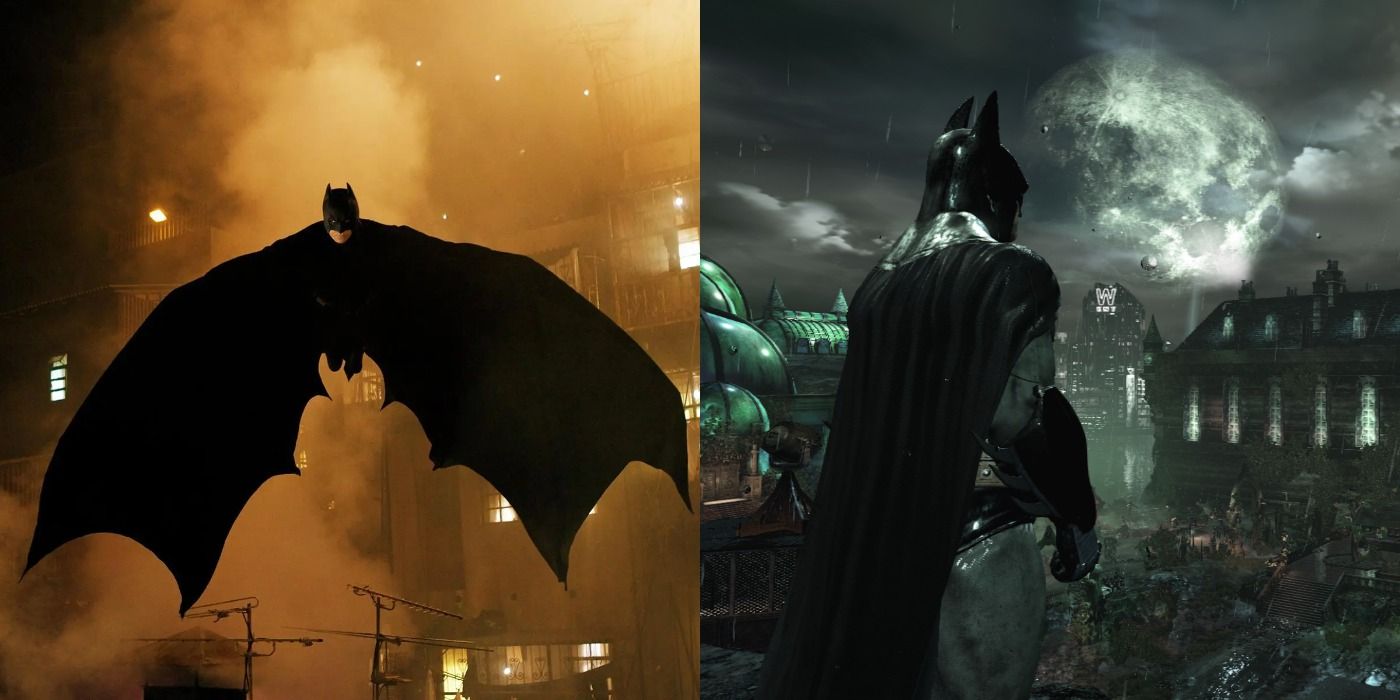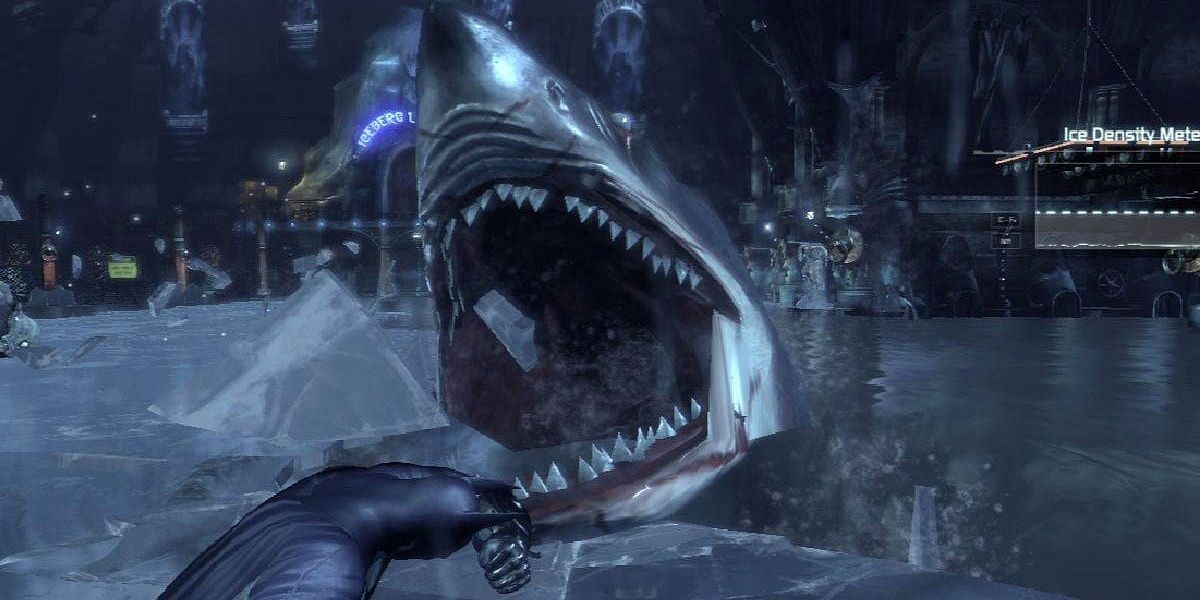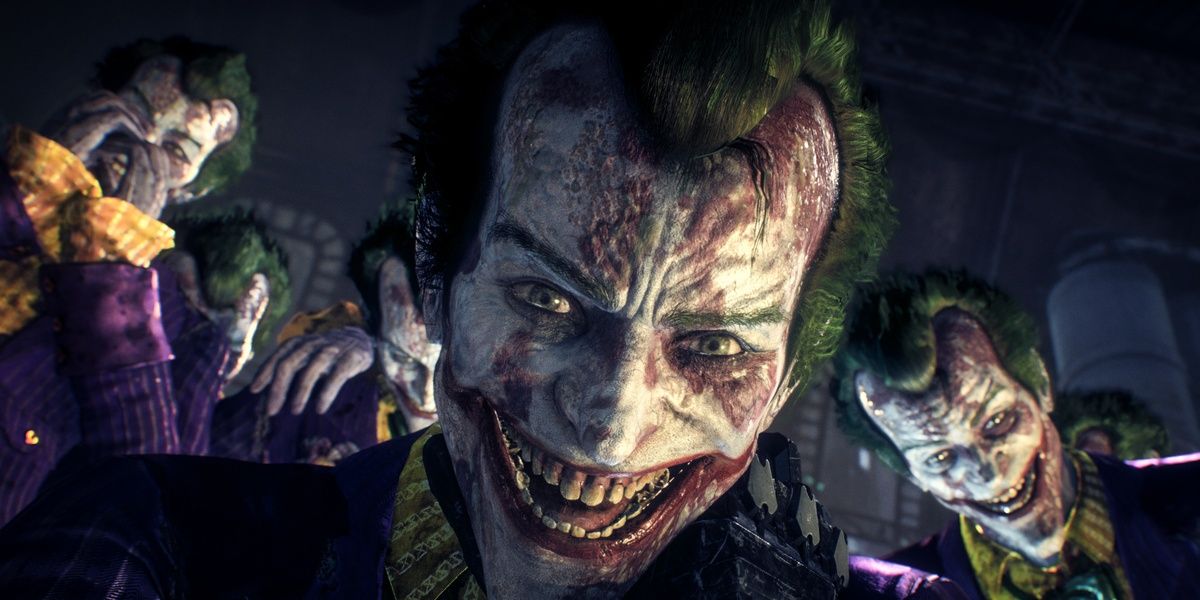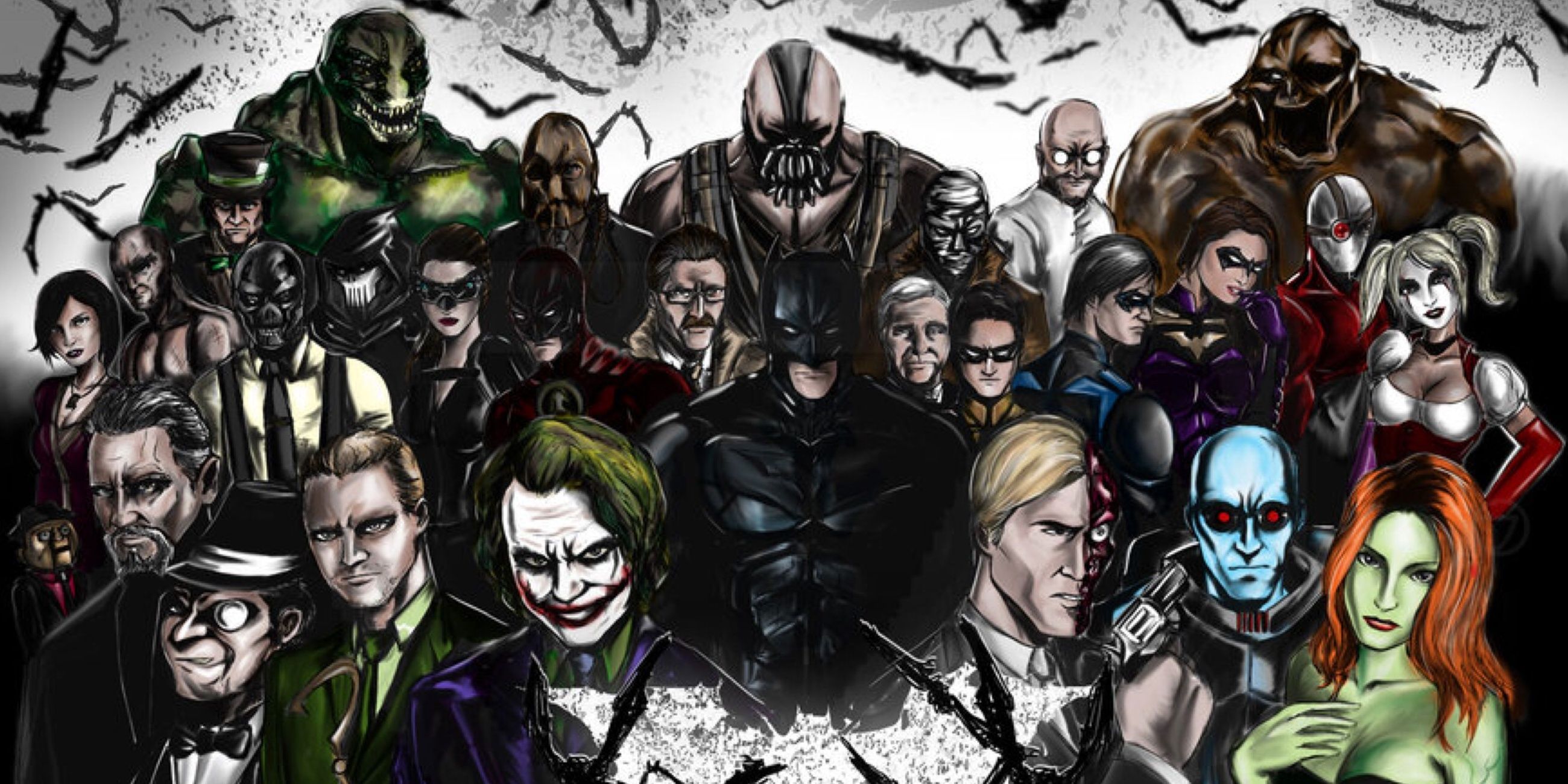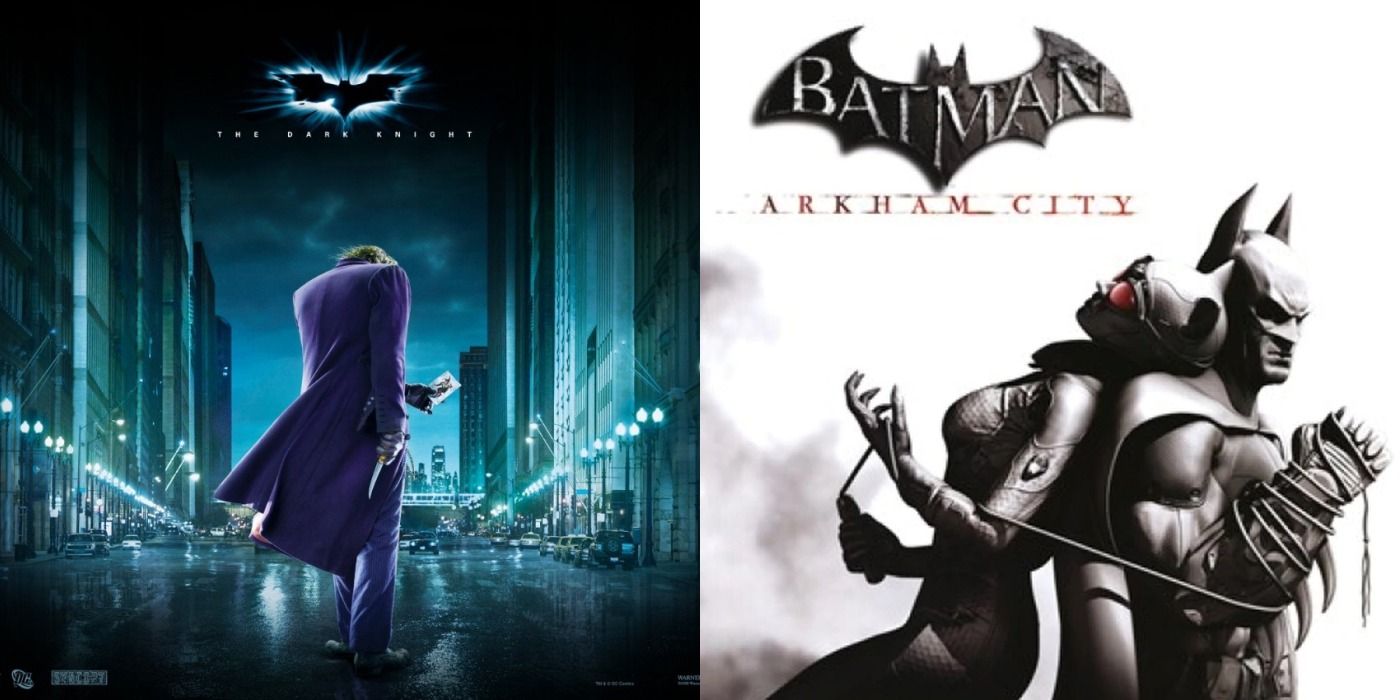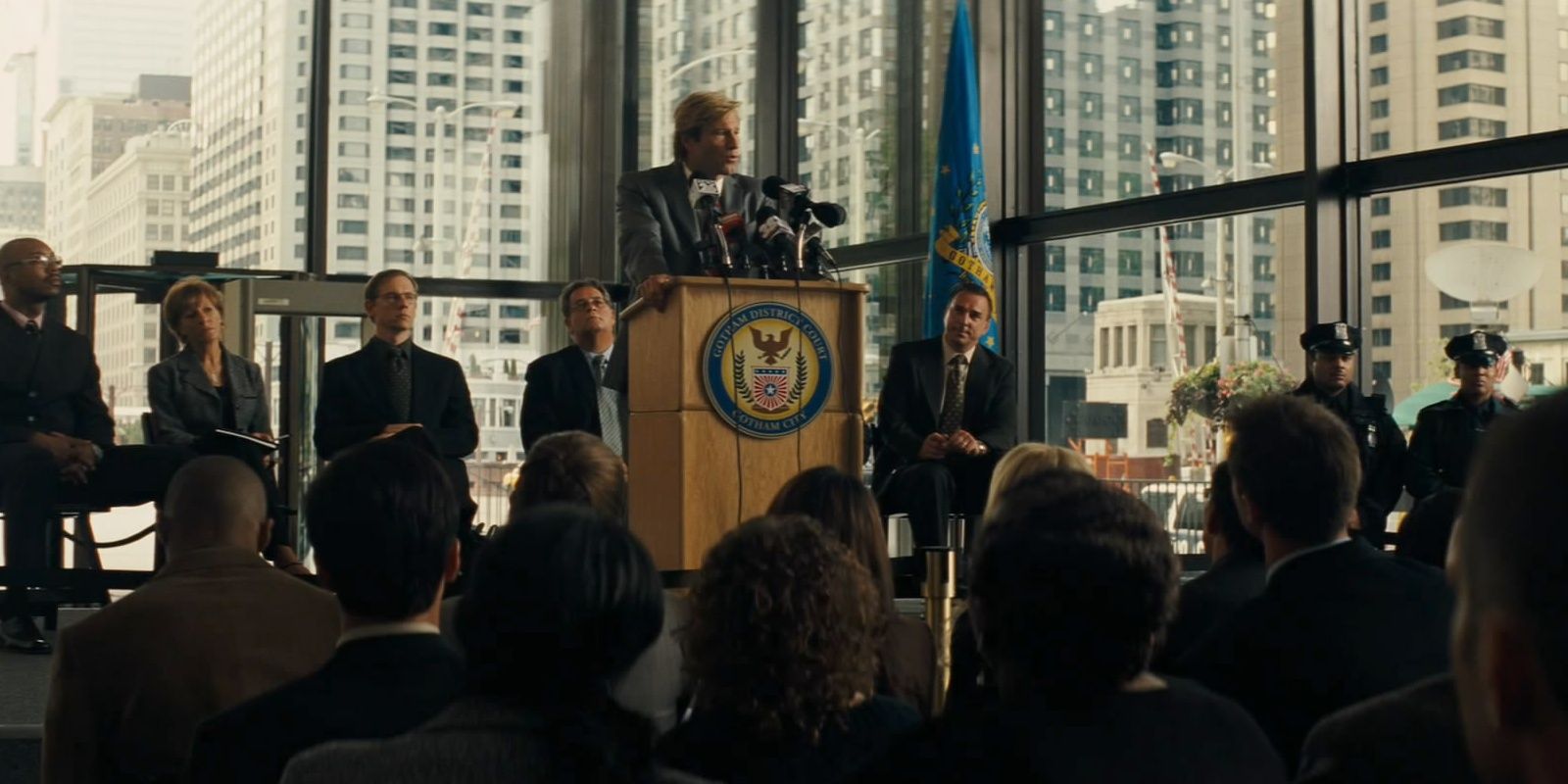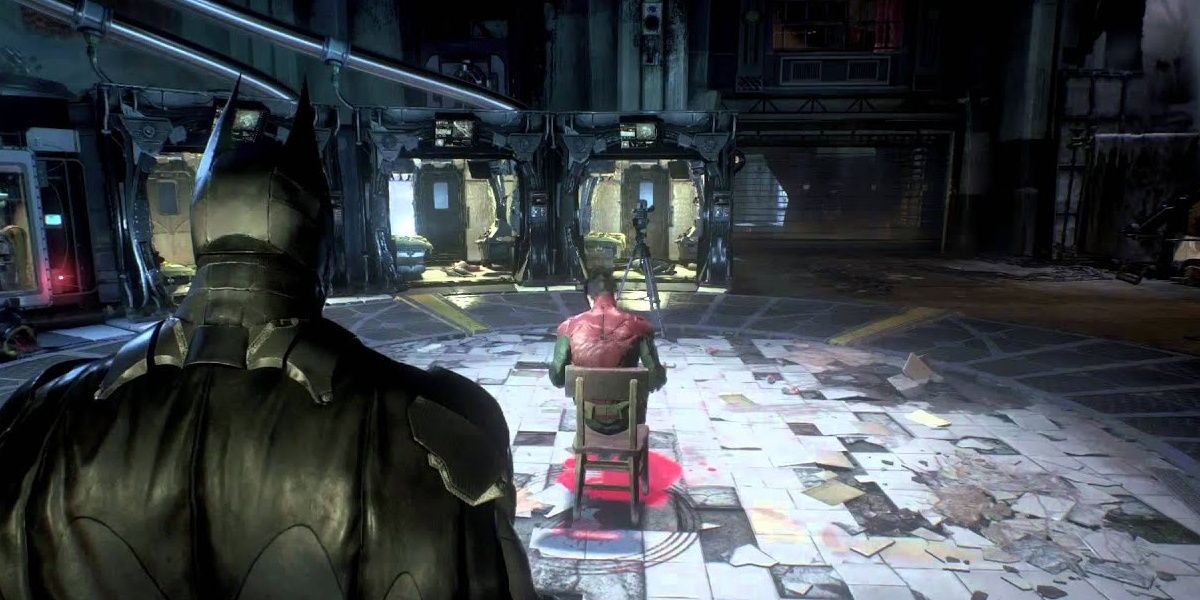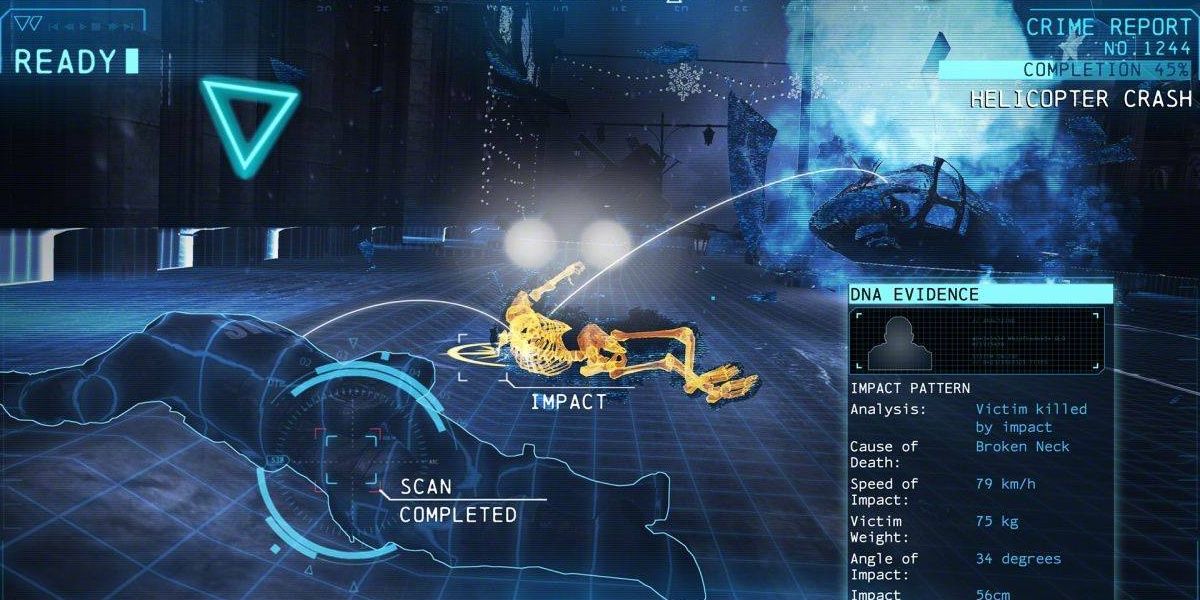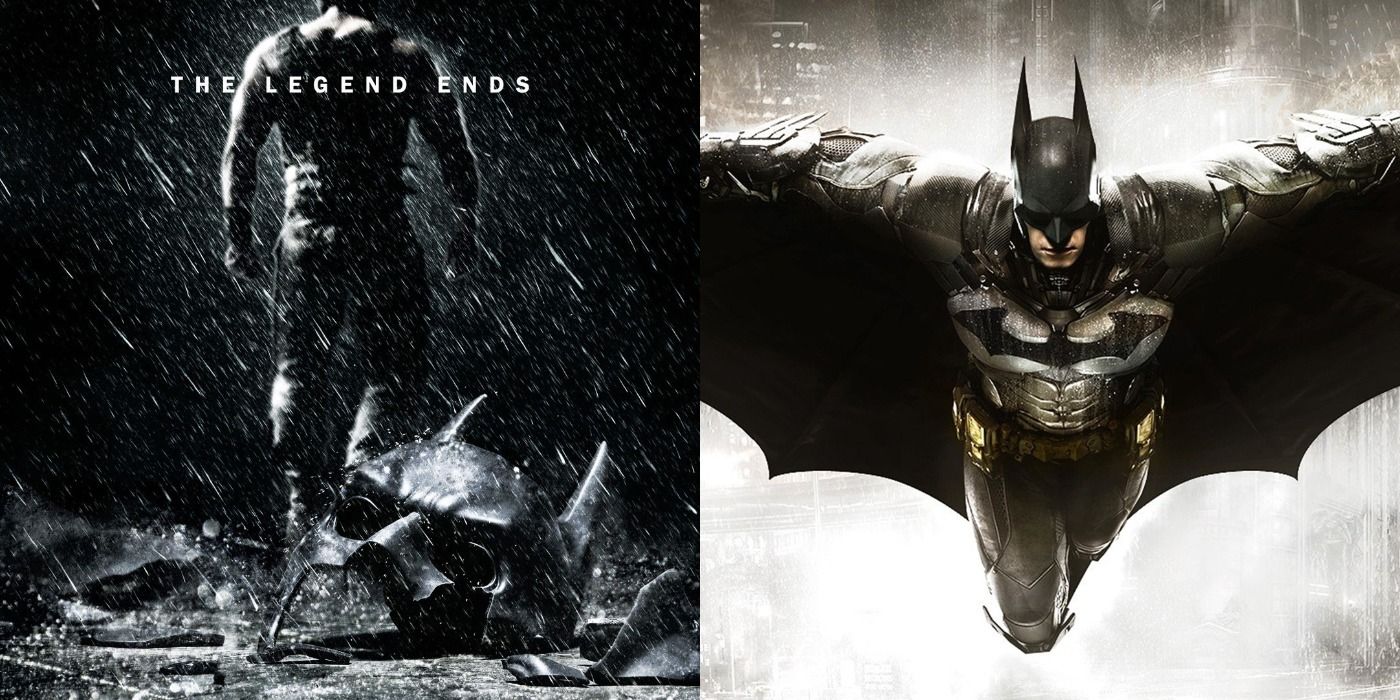In 2005, Christopher Nolan's Batman Begins was released and effectively introduced "dark and gritty" into every movie executive's inbox. When the trilogy concluded in 2012, it was widely regarded as one of the greatest comic book adaptations and movie trilogies of all time. Imitation would follow, as existing franchises like James Bond and Fantastic Four attempted to re-shape their iconic characters using elements of The Dark Knight Trilogy's framework.
Similarly, 2009's Batman: Arkham Asylum received critical praise and had a rippling influence throughout the gaming industry as a whole. The series spawned three more successful entries and invited some interesting comparisons to its silver screen counterpart.
Different: Weapons
One fundamental difference between games and movies is that games need something for the gamer to actually use, and, in Arkham's case, it's Batman's suite of gadgets. The Arkham series provides no shortage of Batman-y toys like explosive gels and remote-controlled batarangs to utilize, which are incorporated into the gameplay in ways that the user can't advance without them.
In Nolan's world, Batman uses some fairly pragmatic, limited gadgets. These include batarangs, grappling hooks, and even an EMP pulse rifle which gets put out of commission rather humorously. In all, however, the Dark Knight Trilogy pales in comparison to Batman's arsenal in the Arkham series.
Similar: An Out-Of-Nowhere Debut
It's hard to believe that anything Batman related could sneak up on people, but, after 1997's Batman & Robin effectively killed the cinematic interest in the character, expectations were at an all-time low in 2005. This worked in Nolan's favor, allowing him the time to craft the exact movie he wanted, leaving audiences and critics alike pleasantly surprised.
Batman: Arkham Asylum similarly took the gaming industry by storm with its smooth combat system and original storyline. While many licensed games were based on existing titles, Asylum instead placed gamers inside an original comic book come to life, combing engaging story elements with exciting gameplay.
Different: Camp
The Arkham games successfully embrace the campier aspects of Batman's nature while never going too far into Joel Schumacher territory. The series sees its fair share of silliness, such as Penguin's pet shark swimming through icy museum waters, but it never feels like it takes the player out of the story.
Conversely, Nolan's Batman movies are famously known for their realistic settings. His stories and characters are purposely crafted to feel like they could hypothetically exist in the real world, which contributes to the audience's relationship with the characters but detracts from the fantastical nature of Batman.
Similar: Batman's Psyche
Both mediums brilliantly put the audience inside Bruce Wayne's mind. Batman Begins is all about Bruce's journey towards learning how to become a symbolic hero. Having become a symbol of hope for Gotham by the movie's end, Bruce wishes to pass that onto Harvey Dent in The Dark Knight, only for the Joker to destroy their plans. In The Dark Knight Rises, Bruce overcomes incredible odds to make the ultimate sacrifice for Gotham.
The Arkham series takes a slightly different look at Bruce's psyche, specifically Batman: Arkham Knight. Here, the hero is living in a bizarre world that no longer has the Joker. However, when under Scarecrow's fear toxin, the Joker manifests in Bruce's brain, taunting him constantly. Bruce must battle for control of his mind while being subjected to horrific images of what Joker did to Jason Todd.
Different: Villains
Some differences between the movie and game series can be chalked up to time, as, unlike the movies, games have countless hours of time to introduce characters and allow stories to play out. The Arkham games utilize this advantage greatly as Batman seamlessly engages one rogue after another. Throughout all four games, Batman faces several foes ranging from the classic (Ra's al Ghul) to the bizarre (Professor Pyg).
The main villains of the Dark Knight Trilogy were limited to roughly two per film and broken down to their essentials. Nolan chose to embrace the characteristics that make them tick, such as the Joker's anarchistic mindset and Scarecrow's fear, while toning down their exterior visage, such as Bane's venom tanks from the comics. Keeping the core elements in place allowed the villains to still remain effective even in Nolan's hyper-realized Gotham.
Similar: An Even Better Sequel
After Batman Begins hit in 2005, audiences weren't going to be caught off guard a second time. Excitement was at an all-time high for the movie after trailers teased Heath Ledger's phenomenal work as the Joker. Nolan saw the audience's expectations and raised them one, delivering a film that left viewers numb in their seats by the time the credits rolled.
Rocksteady Games witnessed a similar response when Batman: Arkham City was released in October 2011. Nearly everything that fans loved about the first game was improved upon. The already-great combat was refined and added to, and Batman's flight was enhanced to allow for diving and propelling. Most importantly, the story was ambitious and groundbreaking, becoming an instant Batman classic.
Different: Collateral Damage
In every installment of Rocksteady's series, civilian collateral damage is nearly non-existent. While this makes story sense within the first two games' framework of Batman infiltrating prisons, the other entries feature noticeably abandoned Gothams. Games like PS4's Spider-Man have demonstrated the capabilities of playing as a superhero within a vibrant city, making Batman: Arkham Origins and Batman: Arkham Knight's election to remove nearly all of Gotham's citizens a curious choice.
Nolan goes the opposite route for his trilogy, instead placing everyday people into the center of each movie's plot. Even in public hearings like Harvey Dent's press conference in The Dark Knight, citizens are allowed to take a prominent role in the drama. The climaxes of each movie feature Batman struggling to save his city's inhabitants from destruction, whether it be from Scarecrow's fear toxin, the Joker's anarchy, or Bane's atom bomb.
Similar: Narrative
Despite being separate franchises, each produced similarly-themed narratives. Aside from telling iconic Joker stories, each series featured a Bruce Wayne consistently confronting his past through flashbacks, contemplating what he is willing to endure as Batman, and examining whether the consequences of his actions to his loved ones are worth the risk.
In addition to the Joker, the movies and games also found their final installments on similar wavelengths. Each makes call-backs to their first entries, with Batman literally revisiting Arkham Asylum in Batman: Arkham Knight, and the League of Shadows references in The Dark Knight Rises.
Different: Detective
One of the many praises toward Arkham's games are their detective sections. Whether it's re-creating crime scenes or taking down a room of thugs, the sections are fun and strategic, forcing the player to, dare we say, really step into the role of Batman. Players utilize Batman's ingenuity in ways that make the games feel like Batman truly could be "The World's Greatest Detective."
While The Dark Knight Trilogy did many things very well, one vocal criticism has been the relative lack of Batman's detective skills. Apart from some light sneaking around in Batman Begins and a fun montage of rebuilding a bullet in The Dark Knight, the movies predominantly left this area of Batman's persona wanting.
Similar: (Almost) Perfect Finales
All great things must come to an end. Topping each franchise's previous entries was always going to be an impossible task, so the individual creative teams elected to conclude their stories on their terms, with somewhat mixed results. Both The Dark Knight Rises and Batman: Arkham City are highly ambitious, well-intentioned, and, for the most part, glorious masterpieces.
Unfortunately, each also suffers from occasional pacing issues, story contrivances, and creative over-indulgence. This doesn't take away from their legacy, however. When viewing each entry as part of a greater whole, it's easier to appreciate the excellent stories being told in both franchises, as concluded by their similar, nearly-perfect finales.

